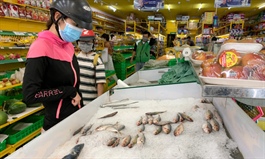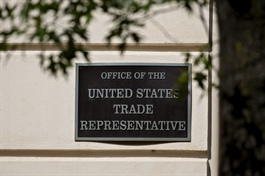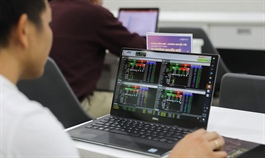Covid-19 wave derails growth predictions
Covid-19 wave derails growth predictions
The fourth Covid-19 wave, stronger than the previous ones combined, has stumped growth expectations and made predictions difficult, experts say.
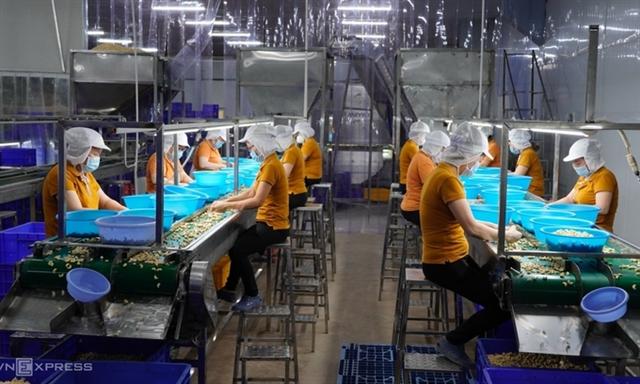
A cashew nut processing workshop of the Long An Food Processing Export Jsc. in the eponymous southern province. Photo by VnExpress/Hoang Nam.
|
"Observers are more worried about the spread of the pandemic now, especially because it is taking place in the national economic locomotive," said Le Duy Binh, managing director of consulting firm Economica Vietnam told VnExpress.
In a report released late June, Dragon Capital Vietnam said it was very hard to predict the country’s economic situation due to the latest Covid-19 developments. The fourth wave had become more complex and dangerous than the combined three previous ones, which affected many production zones and key economic areas like HCMC and Binh Duong.
Since the new wave started on April 27, Vietnam has registered 74,519 community transmissions in 62 of its 63 cities and provinces. HCMC is leading in the number of infections, with 48,863 cases.
Vietnam’s economy was valued at VND6,300 trillion ($273.9 billion) in 2020, over 20 percent of it contributed by HCMC. Last year, the city’s GRDP was over VND1,370 trillion, nearly 30 percent higher Hanoi’s.
HCMC’s neighboring provinces are also industrial production hubs, and the city is a bridge for many supply chains. In terms of specific production fields, the southern provinces are bigger than northern industrial hubs such as Bac Giang and Bac Ninh.
The imposition of social distancing has dealt a strong economic blow to city’s economy.
A bigger problem is that regional linkages, production and supply chains have been disrupted. Essential goods supply chains have been partially disrupted because of differences in regulations on pandemic prevention issued by different cities and provinces.
Nguyen Hoang Bao with the HCMC University of Economics said economic linkages or business networks are in danger of being broken. "The economic situation in the third quarter of this year is not good," he said.
The ongoing fourth wave of Covid-19 has left many enterprises struggling to survive.
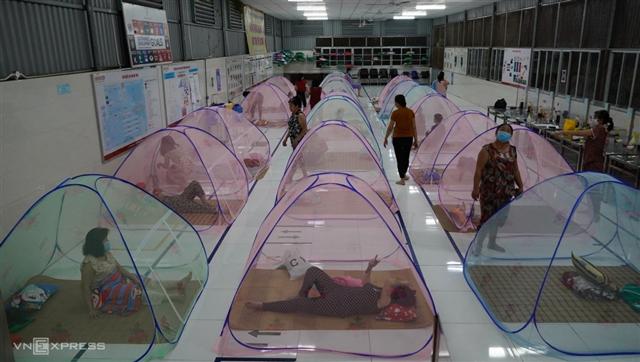
Workers of an enterprise in the southern province of Long An stay on the factory premises as pandemic safety measure. Photo by VnExpress/Hoang Nam.
|
When the fourth wave started, experts said enterprises said it would not be difficult to cope with, thanks to the experience accumulated in the previous three waves.
But a very different scenario has unfolded. Some of the measures taken this time are unprecedented like workers staying in their factories. HCMC has asked firms to ensure that their employees work, eat and rest on the premises, or transport workers between factories and accommodations.
Big firms have managed to implement the stay-at-work mode, but small and medium enterprises, which account for 95 percent of the total, have found it very hard. Many have opted to cease operations, temporarily.
In the first half of this year, the number of enterprises waiting for dissolution procedures or completing dissolution procedures surged by 25.7 percent and 33.8 percent, respectively, against the same period last year, according to the General Statistics Office. Meanwhile, the number of enterprises that suspended operations increased 22 percent.
The way out
However, there is cause for some optimism for the second half of this year. Binh said HCMC and the southeastern region will continue to face difficulties, but the northern industrial hubs like Bac Ninh and Bac Giang will return to normal production.
Binh said that that the national economy’s driving force in the second half of this year would be public investment. If public investment is disbursed at 95-100 percent of the plan, some $20 billion will be pumped into the economy, he noted.
However, disbursement of public investment in the first half of this year was just 29 percent of the annualized plan. "If public investment is disbursed well, it will greatly support economic growth."
Binh also said that besides the expectations from import and export, quick control of the fourth Covid-19 wave would positively impact the economy in the second half of this year.
"If the pandemic is controlled, the economy will have growth fulcrums in terms of macroeconomy and market. But the longer it takes to control the pandemic, the smaller the recovery opportunities."
The Asian Development Bank has cut its 2021 growth forecast for Vietnam from 6.7 percent to 5.8 percent as the fourth wave of Covid-19 hampers recovery.








